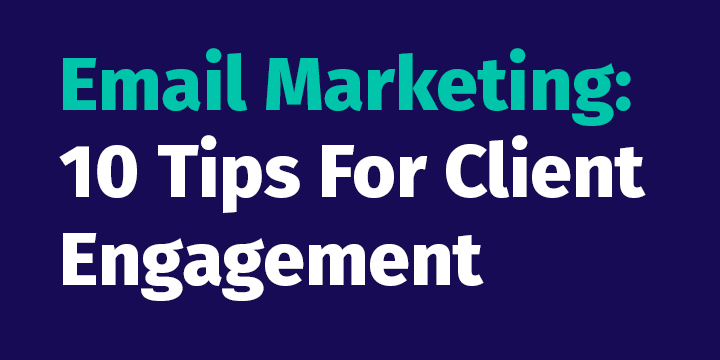No Sales Team—No Problem: The Art Of Closing Deals Without Dedicated Salespeople

A dedicated salesperson—or even better an experienced sales team—can do wonders for your bottom line. Not only can these skilled specialists fast-track your overall growth, but they can also improve your communications and add a sense of professionalism to your process. Unfortunately, not every organization has the means to hire one of these qualified experts yet alone a whole team.
Doing so means bringing on the right people, training them, creating a process, managing the team, and of course compensating them appropriately. To say it can be costly and time-consuming is a major understatement. So, what’s a growth-oriented business owner to do?
The fact is you don’t need a large team of dedicated sales experts to close business like a champ. Chances are, you probably already have everything you need right at your fingertips. With the right process, a little ingenuity, and a dash of technology, you can be well on your way to shattering your sales goals and achieving a new level of growth.
Getting there won’t be easy, but a collaborative team lift from your entire organization can go a long way toward helping you become a lean, mean, selling machine. In this guide, we’ll explore everything you need to know to set the plan in motion so you can continue growing your business without the need for a dedicated sales team.
Outbound vs Inbound Sales
Before we get into it, let’s begin with a couple of quick definitions.
Outbound Sales: This is the process of picking up the phone or knocking on doors to find prospective customers. This is what most of us think of when we talk about sales. It may conjure up images of your fearless employees out on the hunt, spreading the word to anyone and everyone in your service area. Success here favors those with solid communication skills and a clear understanding of your services. Some good old-fashioned persistence definitely doesn’t hurt either. Especially since the answer is going to be “no,” “not right now,” or “I’ll think about it” more often than we’d all like.
New prospects in this case may not be familiar with your company—and may not even be on the lookout for your services. Nevertheless, outbound sales activities can be a great way to get your name out there without spending big bucks on advertising. It can also help you build an impressive list of prospects for future marketing and/or follow-up. Besides, just because getting a service agreement right away may be a long shot doesn’t mean you can’t hit the bullseye from time to time.
Inbound Sales: This is when a fresh face contacts you first and expresses an interest in your services. Maybe they found you through an online search or through a review website. Perhaps an existing customer bragged about you and sang your praises. Or it’s possible that they went old school and found you in the yellow pages or saw your contact information on your service vehicle. Whatever the case, this is an ideal situation you should take full advantage of.
These types of prospects are typically classified as warm leads, since they decided to reach out first. However, just because they’ve put the spotlight on your company doesn’t mean the sale is a slam dunk sure thing. You’ll still have to work for it and make sure they understand the value your company brings to the table. This is especially important since they are most likely shopping around and comparing you to competitors.
As you can see, both techniques have their place in the world of sales—and in order to win in this game, you’ll need to craft a process that includes all of the above.
Preparing Your Field Employees For Sales
A good field employee is worth their weight in gold. Every day they suit up and are tasked with performing quality services while providing a first-class experience for your customers. They are highly trained, experienced professionals who understand the ins and outs of your business like the back of their hands. They also routinely visit your service area and interact with your customers more often than anyone else. Taken altogether, this makes them your best, go-to weapon when it comes to outbound sales.
Hold Up A Sec
With so much already on their plate, you may be wondering if it’s wise to add even more weight on their shoulders. That’s a valid concern. But the fact is, they’re in the best position to succeed. Your customers already trust them enough to invite them into their home or business, and if the employee has been servicing them for a while, they probably already have a solid rapport. Plus, their knowledge of the task at hand puts them in a great position to educate customers and talk intelligently about your services. Not only that, but chances are they’re already doing some form of sales anyway. Any time they point out a new problem area or suggest a new service, they’re basically selling.
How To Convince A Field Employee To Sell
The truth is nobody likes change, least of all someone who has been doing things successfully for any length of time. Some push-back is probably inevitable. Treating your employees well and showing them that they’re valued is a great place to start. Encouraging and supporting them along the way and getting some buy in from them on the process are also good ideas. And if you aren’t doing so already, perhaps it’s time to consider offering a commission on whatever business they bring in. You’d be doing that anyway if you hired a salesperson, so it’s only fair. Besides, once those extra bucks start to show up on their paychecks, they’ll be even more motivated. You may already be doing all of these things. If so, keep it up. If not, this can make a big difference.
Some Quick Tips
Here are a few tips to help your technicians successfully bring home the bacon.
Listen:
One of the sincerest signs of respect is listening intently to what someone has to say. It’s also a great way for employees to learn more about your customers, discover their concerns, and possibly reveal new problem areas they can help out with. Along those same lines, be sure to encourage your team to ask plenty of questions and find out if they have any specific concerns that they should be aware of. Not only will this help serve the customer better, but it can also help them tailor a pitch for additional services if the opportunity arises.
Offer A Free Inspection:
Free has a nice ring to it, doesn’t it? I mean, who doesn’t like hearing those magic words? If you don’t already do so, offering a free inspection of the property can uncover important problem areas, or maybe even something that could be crucial to the job. It can also provide a launchpad for any potential upsell opportunities. If your technician does spot a problem area, they can point it out to the customer then and there and hopefully add a new service. If it’s not possible to physically show a customer for whatever reason, maybe ask the technician to take some pictures so they can show them later.
Convey Urgency When Possible:
Anyone who’s ignored the service engine light on their vehicle for too long can tell you, sometimes it’s best to get things taken care of sooner rather than later. It’s no different when it comes to your services. We’re not telling you anything you don’t already know when we say that untreated problems can come back to bite hard. When talking with customers about potential problem areas, train your technicians to convey this urgency and make sure they provide a clear option to handle the situation—which brings us to the next tip.
Provide Solutions:
Never forget that your customers look to you and your team for information and expertise. There’s no need to go into long winded sales pitches or explanations. Likewise, it’s probably best to limit suggestions so the customer is not overwhelmed with too much information. Instead, train your team to simply point out potential problem areas, suggest a solution they feel is best, and explain why. Then they can leave it up to the customer to decide how they want to proceed.
Visit Prospects In The Area:
When a field employee completes a service call, why not have them check to see if there are any outstanding prospects in the area. If so, it might be a good idea to go knock on the door, make an introduction, and see if they’re ready to move forward with a service agreement. If not, there’s nothing wrong with reiterating the value your team brings to the table and trying to set up one of those free inspections we talked about earlier. If your company uses brochures or flyers, this is a good time to leave one behind. It’s also a good time to plug any current or upcoming promotions.
Keep in mind, there’s no need to be pushy or aggressive here. The employee's job first and foremost is to complete the service they were hired to do. But that doesn’t mean they shouldn’t try to add value to customers and the company alike by looking for opportunities to do more.
Transforming Your Office Team Into An Inbound Sales Machine
Field employees aren’t the only ones who can get in on the fun. Your office staff already handles incoming calls and are the perfect candidates to field inbound sales opportunities. Remember, each and every interaction with prospects and customers creates a new chance for your employees to amaze them with their know-how, positivity, and helpfulness. And who knows, if they play their cards right, there just might be an opportunity to possibly upsell or renew an existing customer or close a new deal. Here are a few tips that can help you get your office staff closing more sales.
Hire Smart:
Office personnel interact with customers every day and handle all sorts of responsibilities ranging from customer service, scheduling, and sometimes even accounting. That’s why it’s important to take your time and hire smart when you decide to bring on new office personnel. Look for people who are adaptable, patient, willing to learn, and possess a can-do attitude. What you’re really looking for is a team-oriented problem solver and an excellent communicator. Finding this person may be a challenge, but the results will be well worth the effort in the end.
Create A Mindset Shift:
Customer service and sales activities go hand in hand. After all, both help to address issues and provide solutions. Unfortunately, not everyone may see it that way, and you might need to encourage your office team to think differently about their job. When your office team views themselves as problem solvers, sales can come naturally as they work to help customers. There’s no need for them to be pushy or aggressive. But there’s no shame in presenting solutions that may cost a few extra bucks.
Encourage Them To Be Proactive:
Providing an excellent customer experience means more than simply being courteous. It also means actively listening to what prospects and customers have to say, asking plenty of follow-up questions, and anticipating their needs. Your office staff should never be afraid to pick up the phone and contact customers who haven’t been serviced in a while to check in and see if they need anything. Likewise, they shouldn’t be afraid to offer advice when they can. Your customers aren’t experts in your industry and as we mentioned before, most of them look to your team for guidance. Encourage your team to speak up and provide it. Also, make sure they can take notes—either on paper or within your field service software—so they can relay details to your technicians who may be able to follow-up and provide even more information.
Train Them On Your Services:
How well does your office team know your company’s products and services? Do they know solutions your company employs and why? Can they talk about why your company’s approach is better than the guy down the street’s? Chances are, they probably know quite a bit, especially if they’ve been in the game for a while. But learning more about your offerings is always a good idea. You never know what new opportunities are waiting to be uncovered when talking with a customer or prospect. Plus, that extra familiarity can help them become knowledgeable experts in the eyes of your customers. Even if your team has already undergone some sort of training, it’s probably a good idea to schedule follow-up sessions from time to time to refresh their memories.
Create A Call Script:
Hey, your team isn’t in high school anymore, so there’s no need to worry about getting caught using crib notes to pass an exam. There’s nothing wrong with thinking about what you want them to say ahead of time and putting together an effective script. Working with your office personnel to develop something that checks all the boxes and asks the right questions can create consistency with your customer support efforts and ensure clear communications. It can also shorten the learning curve for new employees who may not have a ton of experience talking with customers and can help improve your close rates.
Your office team wears many hats, chief among them is problem solver for both your business and your customers. Keeping this in mind and framing the sales process as part of their customer service duties can help them provide all-star service and possibly close a few new opportunities while they’re at it.
Leveraging Your Web Presence For Online Sales And Marketing
The Internet—for better or worse—has become the go-to first stop for most of us looking to make a purchase decision. Not only can you find pages and pages of useful information, but you can also get recommendations from others and even make a quick purchase. It truly is a one stop shop for the modern consumer.
In the world of field services, those with a strong online presence have a clear advantage over those who don’t. This means building a professional-looking website chock full of informative content, an active social media account, and a current Google Business Profile listing. When it comes to sales, your website and Google Business Profile listing will be your primary focus.
What Is Google Business Profile and Why You Should Care
Google Business Profile is a free online tool that helps you promote your company online. It gives you a presence on Google Maps, allows you to post pictures of your office, lets you respond to customer reviews, tells everyone when your business is open, informs them of the types of services you offer, and provides your contact information, among other features. In short, it helps present your business professionally online. If you don’t already have a listing, now is a great time to get started. If you do, it’s always a good idea to check periodically to make sure everything is still accurate and up to date.
Getting People To Your Website
"If you build it, they will come” may work when it comes to that sandlot baseball diamond in your back yard, but anyone who’s struggled to attract website visitors will tell you that it just doesn’t cut it online. That’s were search engine optimization (SEO) and pay-per-click (PPC) advertising come in. If you aren’t already familiar with those terms, here’s a brief explanation of these useful online marketing methods.
SEO relies on the strength of relevant content and web-design best practices to achieve search engine rankings. This method can help you build credibility with your audience and position you as a reputable information resource to prospective customers. While success requires an initial time investment—as you create well-researched written content, videos, and design elements—the long-lasting effects can make it well worth the effort. Sure, it may take some time for SEO to bear fruit, but when it kicks in, you’ll be in a position to reap the benefits for a long time to come.
PPC, on the other hand, relies on paid advertising to reach the top of the search results page. This is a surefire way to create visibility with your target audience and can be surprisingly affordable if done right. The biggest advantage is that you’re basically guaranteed a top spot in the rankings as long as you outbid your competitors. You can also tailor your keywords to target specific geographic locations, services, and/or customer pain points. This level of customization can really come in handy when you’re introducing a promotion or entering a new service area.
Guiding Visitors Down The Purchase Path
Once you’ve gotten visitors to your website, your next step is to lay out some breadcrumbs and lead them down a buying path. Crafting helpful content that informs visitors about common issues and proves your expertise is a great place to start. Then you can nudge them by including some sort of call to action on every page. This can be as simple as adding a contact form to the bottom or promoting a discount or free consultation. If you’re a FieldRoutes client using our marketing suite, you can even ask for the sale right then and there.
Selling Online
When you think about it, what better time is there to close a deal than when a prospect is on your website? You already have the visitor’s attention, they’re right there learning about your business and your services, and they’re probably dealing with some sort of issue that needs attention asap.
Once a visitor has reviewed your services and decided to take the next step, the last thing they want to do is wait around for a response. Your prospects and customers are accustomed to purchasing everything from clothes to groceries, and everything in between online with their smartphones, tablets, and computers. Why should it be any different when it comes to your services?
Don’t make the mistake of thinking that selling online is only for the big boys like Amazon or eBay. You can get in on the action too by taking advantage of our e-commerce solutions. When you use the FieldRoutes operations suite together with the marketing suite, you can enjoy even more useful features, like having appointments scheduled in real-time and customer information imported automatically.
Gearing Up: Using Your Technology To Manage The Process
Back in the old days, you could successfully run a small business with little more than a pencil, some paper, and some good old-fashioned elbow grease. Today, you have access to a ton of technology tools and innovations that can level the playing field. Taking advantage of these solutions can do more than add efficiencies to your operations and shave a few dollars off your monthly expenses. Some of them—like FieldRoutes—can also provide you with lead progression tools to help you manage your sales pipeline.
The Process
No amount of technology will help you if you don’t develop and stick to a proven sales process. Everyone has their own way of doing things, but most follow the same basic steps.
1.Evaluate:
Identify new opportunities as either hot, warm, or cold leads—then determine a strategy to convert them into new customers.
2.Track And Manage:
Make sure new prospects are being contacted, record any important information, and determine any issues clogging up the works.
3.Get The Service Agreement:
Get new customers signed up, find out what worked, and ask for referrals and reviews to help you snag even more new customers.
4.Repeat:
Go back to square one and do it all again.
How Your Technology Can Help
If your field service software includes some sort of lead management functionality, you can leverage those features to help at every step in the process. Perhaps most importantly, your software can help keep tabs on outstanding sales leads, so you never miss an opportunity. You know how it is. When things get busy, it’s easy for a few new prospects to slip through the cracks. Using your technology to track leads can help make sure your team follows up with each and every one of them and addresses any questions or concerns they may have.
In the early stages of the sales process, providing your technicians with the ability to record important information in the field is one of the most useful things your software can do. Once these details are entered in the system, they can be viewed in real time by the rest of the team, so whenever that prospect or customer calls your office, the person answering the phone can pull up a record and instantly know where the conversation left off.
This allows your office team to respond to any outstanding objections or concerns right then and there and adds a sense of continuity and professionalism to the interaction. This works the other way too as employees in the field can check the software to see if there are any outstanding prospects in the area, so they can follow-up with them like we talked about earlier.
Once a service agreement is signed and sealed, your system should be able to send automated communications to your customers. Some systems—like FieldRoutes, can automatically send a survey to customers after a service has been completed. Then, if they respond favorably, they’ll be sent another follow-up piece to ask for an online review. This can help build your company’s reputation and even assist with your online search results, helping you bring in even more new prospects.
A Word About Metrics
Real-Time Reporting
You can’t manage what you don’t measure. So, during this entire endeavor it’s important to periodically track and review key data so you can continue to improve your close rates and stay profitable. Here are a few numbers you should track and why.
Cost Per Lead: New leads are great. But if you’re spending a fortune to attract them, then maybe it’s time to go back to the drawing board and see what you can do better.
Customer Acquisition Cost: If closing those new deals is costing you more than the lifetime value of that deal, you definitely have a problem that needs to be addressed.
Marketing Qualified Leads: It’s always a good idea to track where your prospects are coming from. Measuring this number can help you determine the effectiveness of your marketing campaigns.
Net Promotor Score: How likely is a customer to recommend your company to someone else. To get a ballpark idea of this, take your positive reviews and subtract that number by your detractors. A positive number is great and the higher it is, the better.
You can go crazy analyzing numbers all day. But spending some time every now and then to focus on these metrics can help steer you in the right direction and keep your sales process moving forward.
Your Partner in Growth
We hope this guide has been helpful. Whether you’re looking to add efficiencies, make things easier for your employees, improve your customer experience, increase sales, or anything in between, FieldRoutes is committed to helping your business reach its full potential.
The platform automates all aspects of field service operations for enterprise and small business customers that span office management, advanced route optimization, payment processing, digital sales, marketing, and customer acquisition solutions that accelerate growth, streamline operations, increase customer retention, and maximize revenue. Our operations and marketing suites were built with your customers and employees in mind and can help you grow quickly, scale intelligently, and serve customers relentlessly.
Call for a Demo at 214.466.1765
Join the growing number of thriving businesses using FieldRoutes to acquire new customers, improve automation, and crush the competition.





